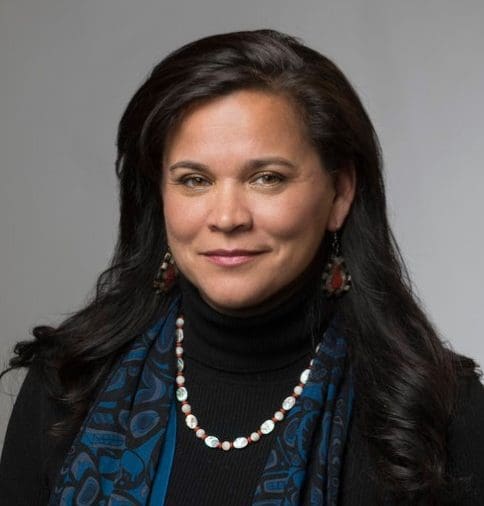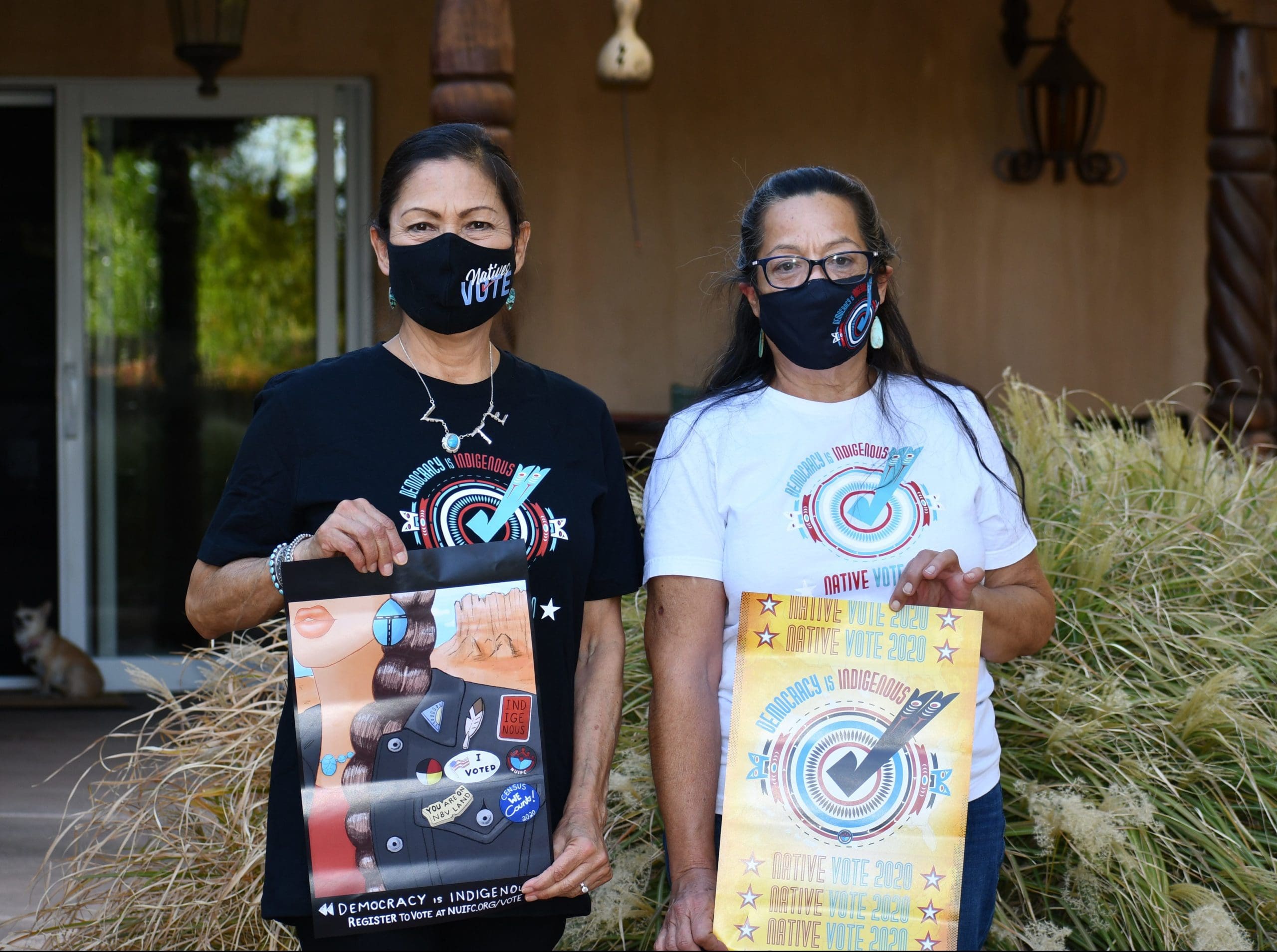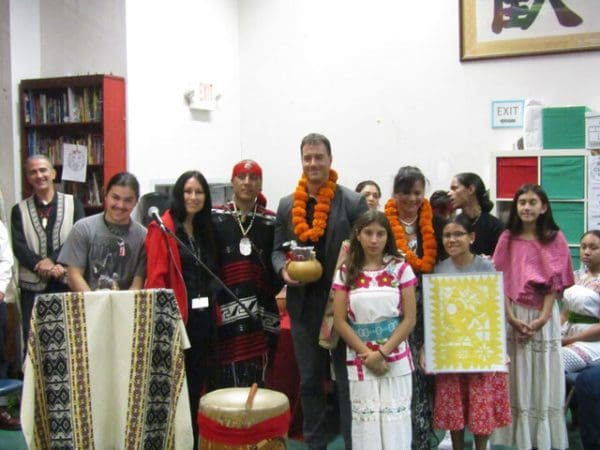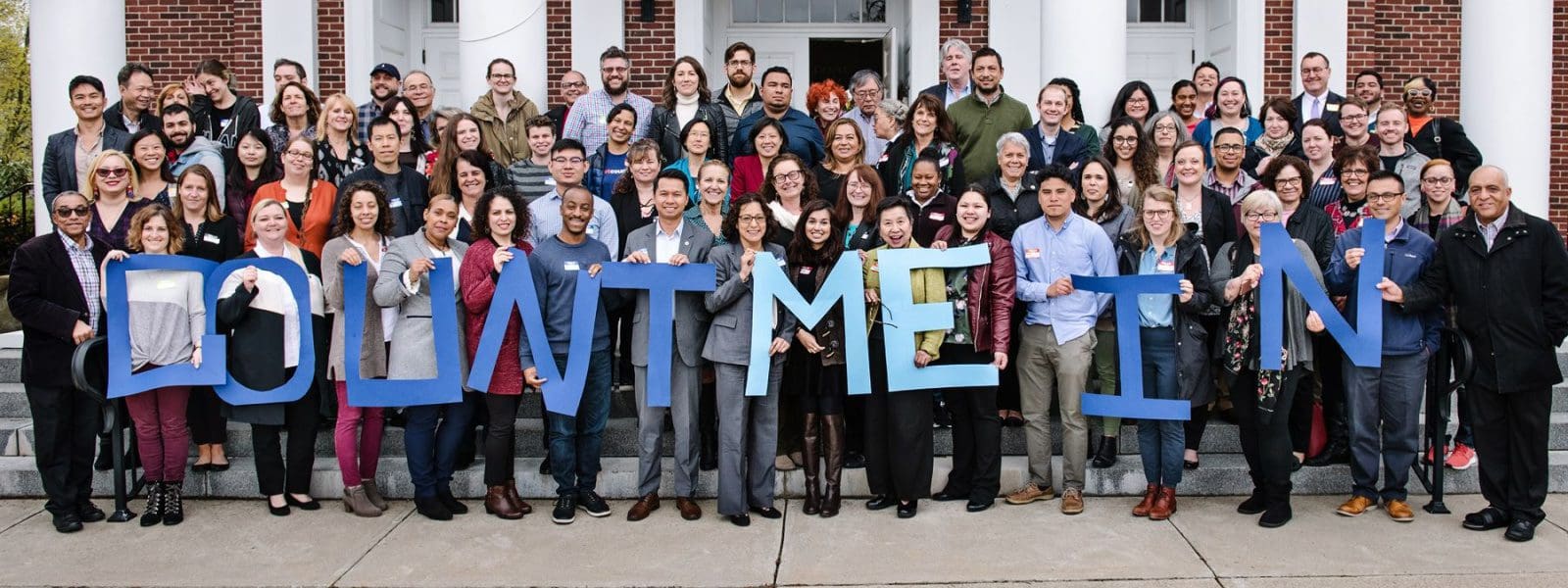Janeen Comenote (Quinault Indian Nation) is the founding Executive Director of the National Urban Indian Family Coalition (NUIFC), a new member of Independent Sector. NUIFC also is a member of the Nonprofit Infrastructure Investment Advocacy Group (NIIAG), co-founded by Independent Sector and KABOOM! Comenote is a member of Independent Sector’s Public Policy Committee. In April, she spoke at a White House meeting with Independent Sector and NIIAG leaders about the importance of broadband internet access for urban and rural communities. We spoke with her about her work, her organization, and the idea of thriving.
IS: Could you tell us about your organization?

Janeen Comenote
JC: The National Urban Indian Family Coalition is a coalition of 46 urban American Indian 501(c)(3) nonprofits, headquartered in Seattle, Washington. Advocating for healthy nonprofits is the underlying and driving force at the NUIFC – to ensure our urban nonprofits are resourced properly and that they are included in policy. We believe in reflective policy – meaning simply, that to really improve and transform the lives of our urban Native constituencies, we must be reflected in policy. We also know that resources follow policy, and if we remain invisible in policy circles, we remain invisible in resource circles.
We are the silent majority. We are citizens of our nations. We belong to tribes. But honestly, for the tribes, very few services go to their off-reservation constituencies, which isn’t a negative reflection on our tribal governments, they aren’t resourced enough themselves. That’s where these urban American Indian nonprofits step in. We face very diverse socio-economic indicators and deal with a high rate of poverty. These (c)(3)s are critically important in helping our families succeed. As American cities are getting more expensive, it makes the lives of people who live in poverty harder.
IS: Why is the idea of visibility important to you and the nonprofits you work with?
JC: As an organization, part of our journey working with these (c)(3) nonprofits is to increase our visibility. Invisibility means that you’re not included in conversations, policy making or resource distribution. Invisibility contributes to racist negative stereotypes of Native people as some distant relic of the past, think horseback and teepees or more negative stereotypes of the drunken Indian. Nearly every Native person in the country is used to doing what we call “Indian 101” – this is because the education system is the primary reason we are seen as a historical people, not thriving contemporary people.
Few people realize that 78% of us live off reservation [The U.S. Census Bureau estimated in 2019 there are 6.9 million American Indians and Native Alaskans, including people of mixed backgrounds, in the country]. Of that, 70% live in U.S. metropolitan statistical areas. Forty percent of Native American voters live in 36 cities.
We realized that we needed to educate people. In our 2015 report, Making the Invisible Visible, which was a reflection of 11 policy roundtables in 11 cities. Part of our goal was to inform policymakers and politicians about the needs of urban Native communities. Making the Invisible Visible illuminated the need for us to educate policymakers – that we are still here, that we live and vote in their districts, we go to your schools, our children ride the school bus with your children.
IS: Along the lines of visibility, why are voice and voting important?

Former U.S. Rep. Deb Haaland (Pueblo of Laguna), left, and Laura Harris (Comanche), Executive Director of Americans for Indian Opportunity (AIO) are seen in 2020 promoting voter engagement and the NUIFC initiative, “Democracy is Indigenous.” AIO is a member of NUIFC and Independent Sector. Haaland is now U.S. Secretary of the Interior. Photo courtesy of AIO
JC: In recent years, we’ve moved in the direction of civic and voter engagement [In 2020, NUIFC released its Democracy Is Indigenous report and initiative]. If you want policies to address your needs, you need to vote people in who will do just that. It’s been a natural iteration from naming invisibility, to educating folks, to letting powerbrokers know we exist. Invisibility doesn’t divide along partisan lines. What we’re doing now is taking the report findings and findings ways to put a spotlight on those issues.
As part of our civic engagement work, we’ve also become a funder. We give grants to support nonpartisan voter engagement. We’ve worked in 22 cities with 27 nonprofit organizations. Starting in 2018 with the first ever grant for urban Indian civic engagement for $500,000, we’ve grown our efforts and invested $1.8 million in 2020.
Every relationship we make is strengthening the urban American Indian nonprofit sector. We don’t do our work to amplify ourselves. We do it to amplify the sector we work with. People and nonprofits working on the frontlines are the real heroes. We do this in a number of ways, from investing actual dollars and getting resources to the frontlines to working shoulder to shoulder to ensure that our collective voices are heard. It’s satisfying work.
IS: What are you working on for the future? What else would you like to add?

Janeen Comenote of NUIFC and Joe Hobot of Takoda Prep celebrate with community members at a Semillas Community Schools event in Los Angeles, before the COVID-19 pandemic. Photo courtesy of NUIFC
JC: Our next big project is launching a research project and environmental scan to explore the impact of historical trauma on American Indian nonprofits. When you have a community that is in active historical trauma, and most communities of color have experienced this, those behaviors can manifest themselves in our nonprofits. What I’ve watched over 20 years, when individuals working at nonprofits are in unaddressed trauma, the bottom line of those organizations sometimes take a hit. Organizations that put strategy in place to address community trauma tend to be those that thrive. We want to understand why so we can strengthen our sector.
Another real push for us: How do we build meaningful power with other communities of color in our cities? We’re doing it with some Asian American and Pacific Islander communities and are looking to expand that. When we combine our power and merge our voices, you have to listen. For us, it’s a matter of not being siloed. The more we can work together, across geography, across race, across life experiences, across organizational missions, the stronger we’re going to be.
Any opportunity we have to work with the broader nonprofit sector is important. It’s important for us to be part of Independent Sector, and we’re important for Independent Sector to see. We add value to Independent Sector, and Independent Sector adds value to our organizations. Building relationships takes years. It’s hard work. But I’m not going to allow anyone to ignore us any longer, and there is power in welcoming people to our land.
Janeen Comenote also is an alumni of the Americans for Indian Opportunity Ambassadors Program. She recently joined the Board of Directors of Marguerite Casey Foundation. The foundation and Americans for Indian Opportunity are Independent Sector members. The top photograph, courtesy of American Indians in Texas (AIT), shows members of AIT – San Antonio celebrating their successful Native Vote parade in the fall of 2020. Learn about other Independent Sector members and becoming a member.



